Eclipse and Eclipse ... their concept and how they happen!
Weather of Arabia - The former president of the Jordanian Astronomical Society, Dr. Hanna Sabat, explained that the concept of eclipses and eclipses relates to the fall of the moon’s shadow on Earth or the fall of the earth’s shadow on the moon.
He explained that there has been no phenomenon, throughout history, of astronomical phenomena that have affected tremendously in the souls and behavior of humans as did the phenomena of eclipses and eclipses .
Eclipse and Eclipse Throughout History:
The reactions of different peoples ranged from fear and panic to seeing the eclipse or eclipse , and the pessimism of others. For example, when an eclipse occurred, some people of the Far East rushed to the streets, making noise, and beating drums, in order to frighten the huge dragon that swallowed the sun according to their belief - which the serpent “Apophis” was rewarded to by the ancient Egyptians. And they always managed to scare him! And there are wars that ended thanks to the eclipse! There are cities that fell due to an eclipse !
Eclipse and Eclipse in the Tongue of the Arabs:
He added that the contemporary scientific meaning of the eclipse is used to denote the eclipse solar eclipse , while the word eclipse is used to denote the lunar eclipse , but these terms are used loosely in the foot. Where Ibn Manzoor in “Lisan Al-Arab”, for example, indicates that the word eclipse is permissible to use for the two crimes (the sun and the moon): To the black. "
Perfect shade and semi-shade:
In order to understand how eclipses and eclipses occurred, it is necessary to know the concepts of complete and semi-shadow. It is well known that light under normal conditions runs in straight lines. If there is a light source, a shadow is created in the area where the light from this light source is hidden behind an object (not lit). In the case of extended light sources - such as the sun disk, the shade produced by these sources is divided into two main regions: the complete shade umbra region in which the light source is completely obscured relative to the viewer there, and the penumbra region in which part of the light source is obscured and part of it is visible
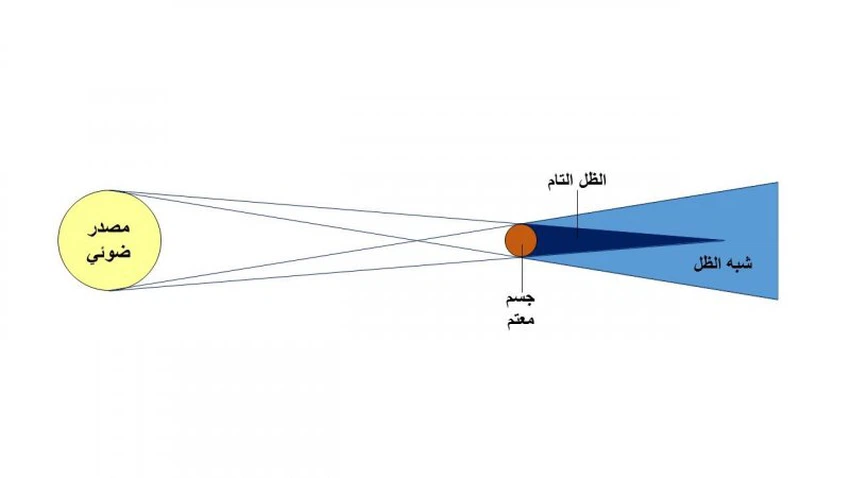
Solar eclipse:
And between "Sabat" that the solar eclipse occurs during the orbital motion of the earth around the sun, which coincides with the orbital movement of the moon around the earth. In this case (which is coincident with the annotation stage), the moon's shadow falls to Earth, and the eclipse occurs. The total eclipse is total solar eclipse (that is, the sun’s disk is completely hidden from view) in those places of the Earth that are in the full shadow of the moon.
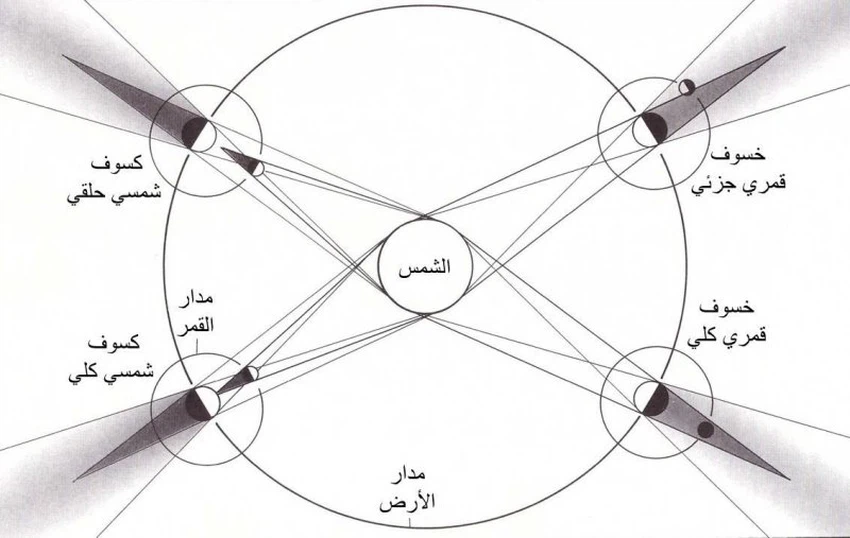
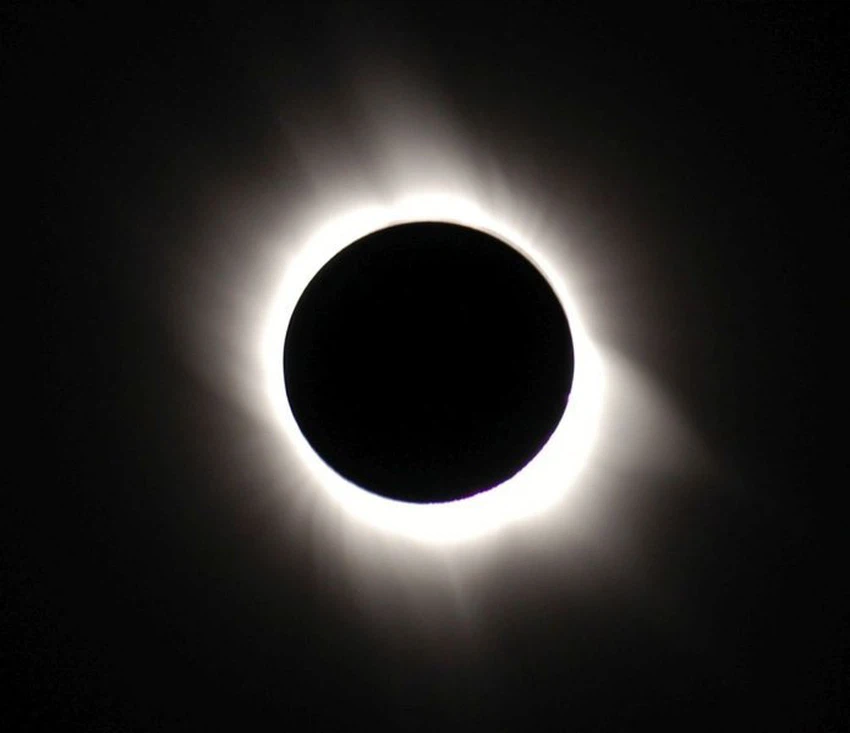
The partial eclipse will be partial solar eclipse (ie Ihtjb only part of the sun disk) in those places of land located in the semi - shade area of the moon
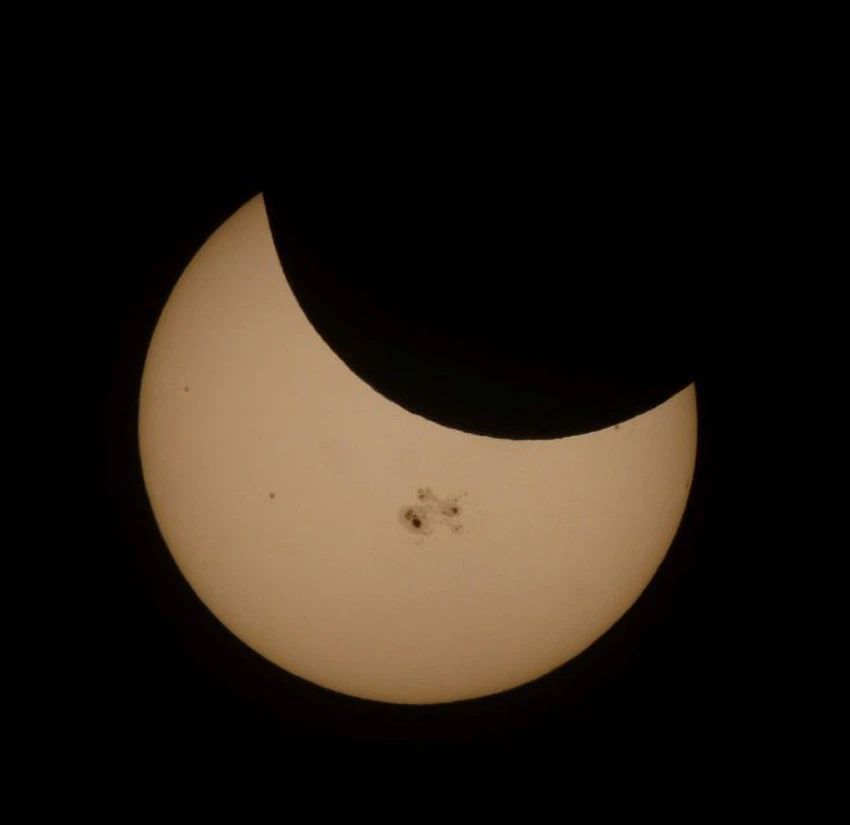
A total eclipse (as seen from certain places on Earth) must be accompanied by a partial eclipse (seen from other regions). However, sometimes the Earth is located only in the semi-shadow region without entering the full shadow of the moon, then only a partial eclipse is produced.
Other times, when the moon becomes at the apogee (the farthest point from Earth in the moon’s orbit), the apparent diameter of the moon appears smaller than the apparent diameter of the sun. If this coincides with a total eclipse, the disk of the moon does not completely cover the disk of the sun, and produces an annular eclipse. The sun shows a luminous ring in the center of the dark moon disk
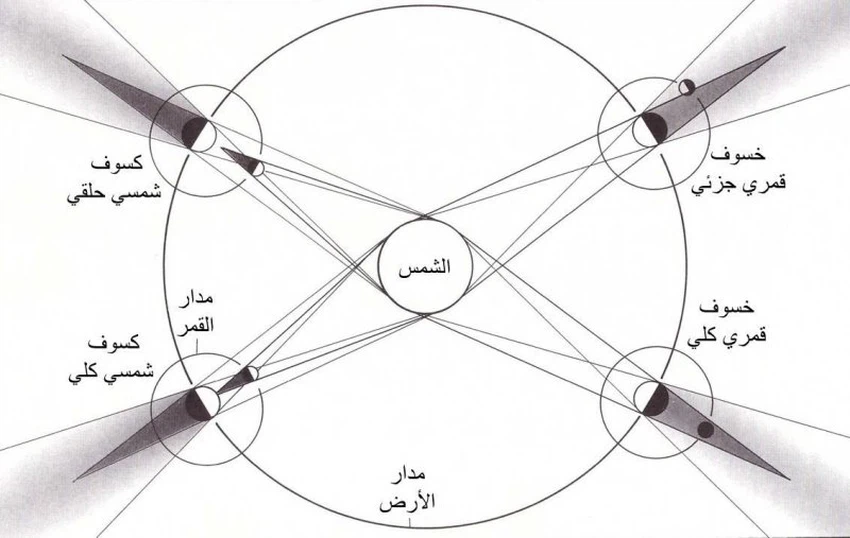

Moon eclipse phenomenon:
As for the lunar eclipse , it occurs when the sun, the earth, and the moon fall on exactly one straightness, as the Earth lies between the other two crimes. In this case (which is coincident with the full moon stage), the Earth’s shadow falls on the moon, and a lunar eclipse occurs. Where the penumbral eclipse begins when the moon enters the semi-shadow region of the Earth, and this cannot be observed easily from an observational point of view because the moon's dimming is light. This is followed by a partial lunar eclipse when the moon partially enters the full shadow of the Earth, where a gradual darkening of the lunar disk occurs.
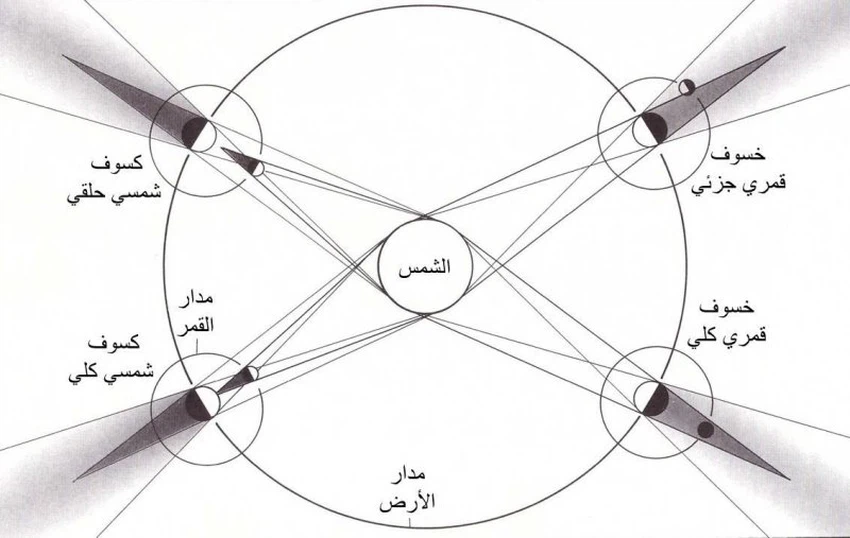
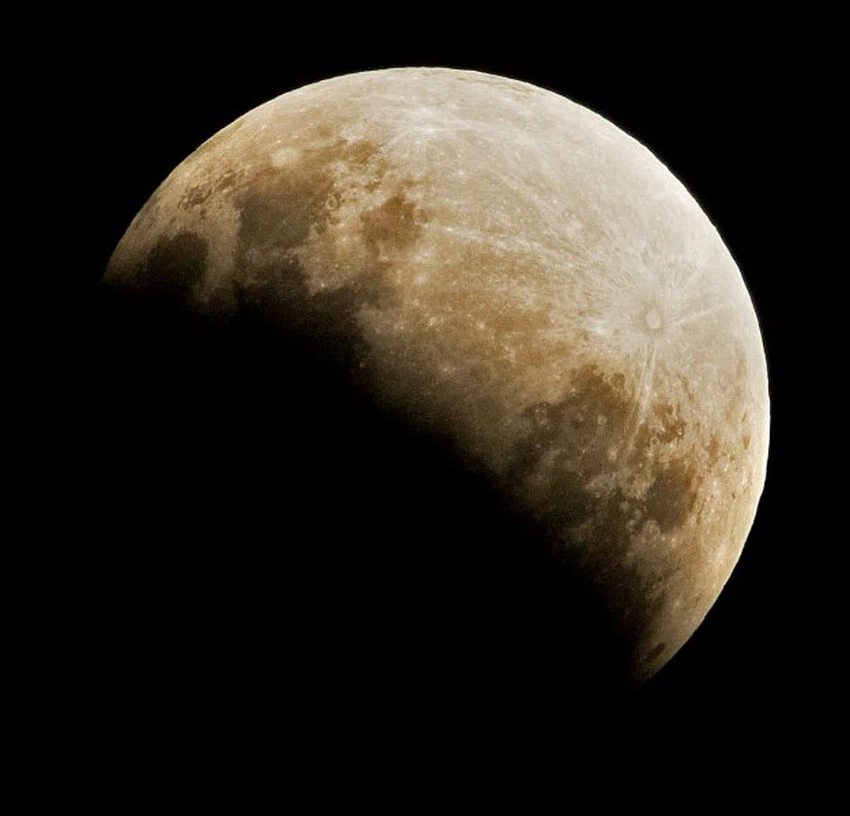
Finally , the total lunar eclipse begins upon entering the full moon in the total shadow area
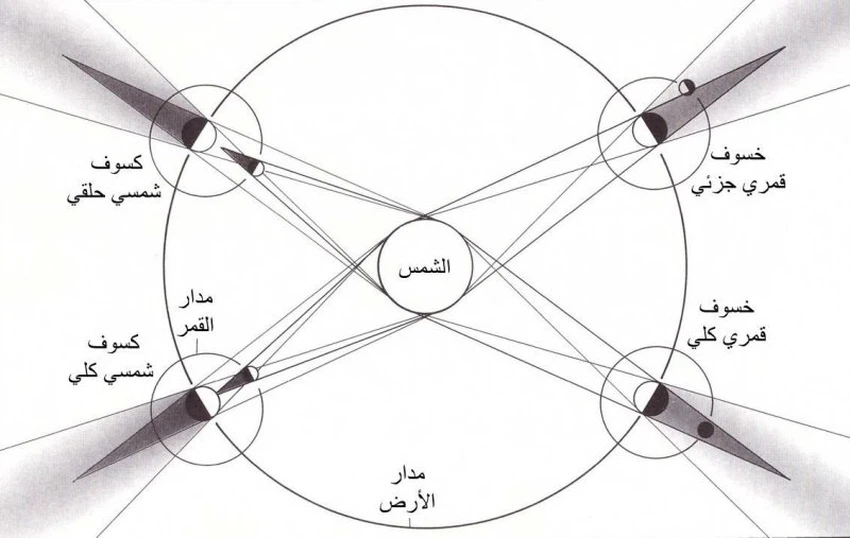
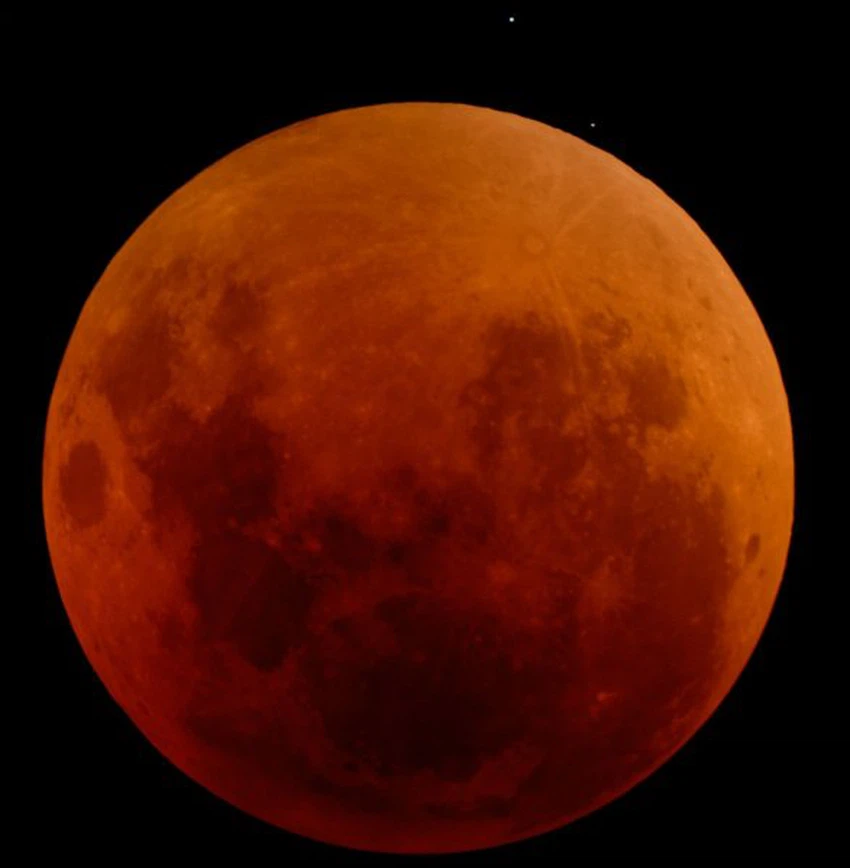
It is noted that the moon disk in this case does not disappear completely, but rather becomes darker with a reddish tint. This color is caused by the red wavelengths of sunlight that pass through the Earth's atmosphere and fall to the moon's surface. At the end of the total eclipse, the moon passes the stage of the partial eclipse, then the semi-shadow eclipse (that is, the inverse process). Sometimes the entire moon does not enter a complete shade — that is, part of it enters, and only a partial eclipse occurs. Other times, the moon enters only the semi-shadow region, producing only semi-shadow eclipses .
See also:
Video ... the phenomena of Eclipse and Eclipse and the difference between them!
The events of the Eclipse and Eclipse during the next 10 years
Arabia Weather App
Download the app to receive weather notifications and more..



